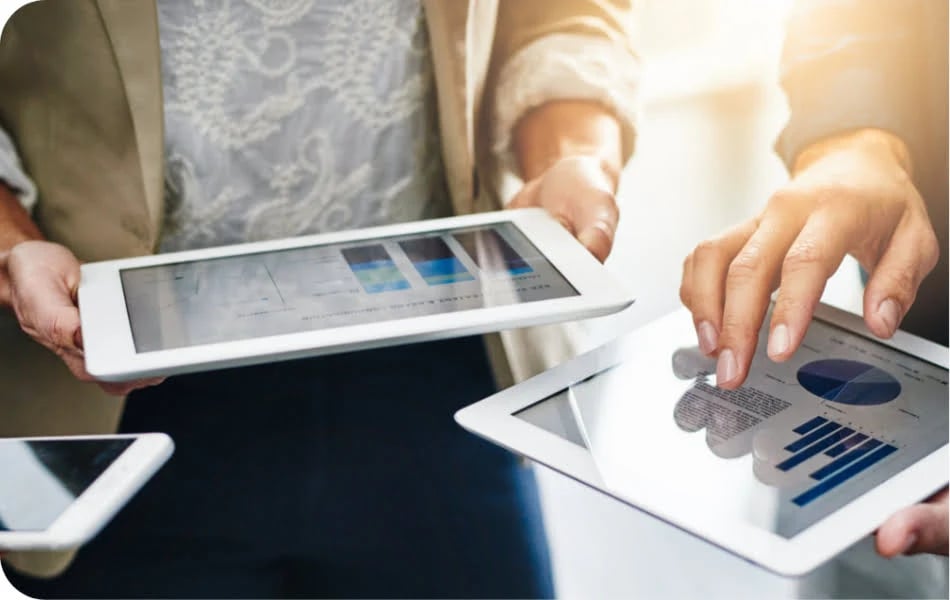Machine to Machine, Internet of Things, connected devices ... What is all about?
IoT, Internet Of Things or M2M are terms used to refer to the interaction between real-world objects using a simple access to a network.
Once you read this guide, you will :
✓ Gain a deep understanding of IoT and M2M and how they relate to each other.
✓ Learn how you can leverage these technologies to make your business more successful.

Even though machine to machine (M2M or MtoM) and the Internet of Things (IoT) are often confused, these two expressions do not represent exactly the same thing. Considered a subset of the IoT, the M2M market has been expanding faster and faster each year. This progression may be explained particularly by a number of connected devices that is continuously growing and that, according to Idate, will reach nearly 80 billion connected objects in 2020.
Machine to machine, or M2M, is the combination of information and communications technology (ICT) and smart, connected devices that allows these devices to interact without human intervention. This expression, most often used in the professional world and in particular the field of telecommunications, makes general reference to the interaction between devices thanks to technology.

There are multiple technologies that allow for connecting devices and transferring data between machines. Thus, it is important to choose a connectivity solution that is adapted depending on your needs and the type of device you want to connect.
Among these different types of M2M connectivity, we can find RFID (10-metre range), Bluetooth (10–20-metre range), Wi-Fi (50-metre range), low frequency (range of approximately 1,000 kilometres), the GSM network (through M2M SIM cards, global range), and even satellite.
The concept of machine to machine is a subset of the Internet of Things (IoT for short). In fact, the Internet of Things is presented as an extension of the Internet in the physical world. It designates the communication of data and information between devices and machines from the real world to the Internet network.
A new expression recently appeared, that of the IIOT (Industrial Internet of Things) referring to connected items in the industrial field.
Thus, the expressions “machine to machine”, “Internet of Things”, and also “connected devices” each have a distinct definition.
The term “Internet of Things” was first used in 1999 by Kevin Ashton, an employee at Procter & Gamble, to designate the link that existed between RFID technology and the Internet. Kevin Ashton, who that same year co-founded the Auto-ID Center at the Massachusetts Institute of Technology, which is dedicated to designing devices connected by RFID and other networks of wireless sensors, is today considered a pioneer of connected device technology. It is thanks to him that the history of the Internet of things started.
According to Dassault Systèmes, a French software company, “there were about 8.7 billion connected devices in the world at the end of 2012”. Cisco, an American company with expertise in IT servers and networks, estimates that this number will reach 50 billion in 2020, while Idate (which stands for Institut de l’audiovisuel et des télécommunications en Europe) thinks that there will be closer to 80 billion connected devices in the world by then.

According to a study conducted by Idate on the years 2013 to 2017, the global M2M market should display average annual growth of 30% in volume and 13% in value. The study institute also predicts global revenues of €40 billion in 2017, which is definite progress for all of the stakeholders of M2M. Furthermore, the company Cisco announced that 58% of data transfers in 2020 will be machine to machine exchanges (as opposed to 38% in 2015).
According to ARCEP, which stands for Autorité de régulation des communications électroniques et des postes, the GSM network is the technology that should be favoured in the machine to machine sector: “only the mobile network allows for meeting the constant connectivity needs in situations of national mobility or international roaming.
The use of mobile networks as access technology for M2M applications is therefore unavoidable and promises improvements in productivity and service quality for companies that use these applications”. Plus, they allow for “using all of the available communication services, such as data, voice, and text messages”.
Inside a device, a SIM card sends information to and receives information from an IT server through the mobile Internet network.
The data move from one machine to another on 2G, 3G, or 4G, depending on
Do you have a professional project and would you like further information?
